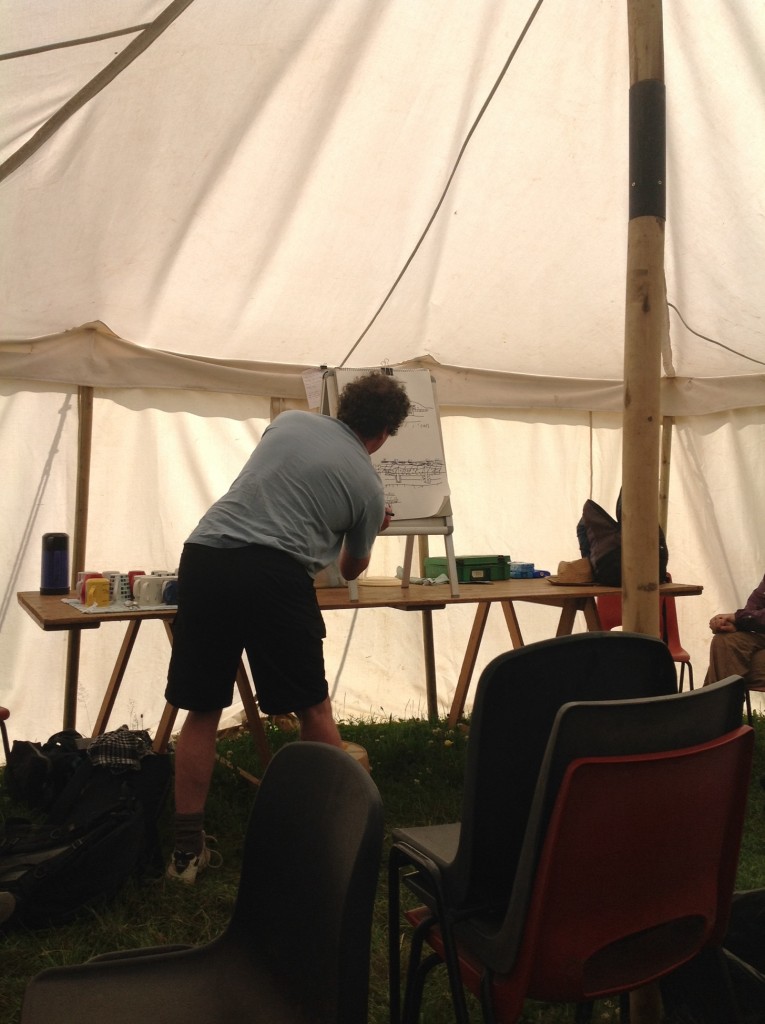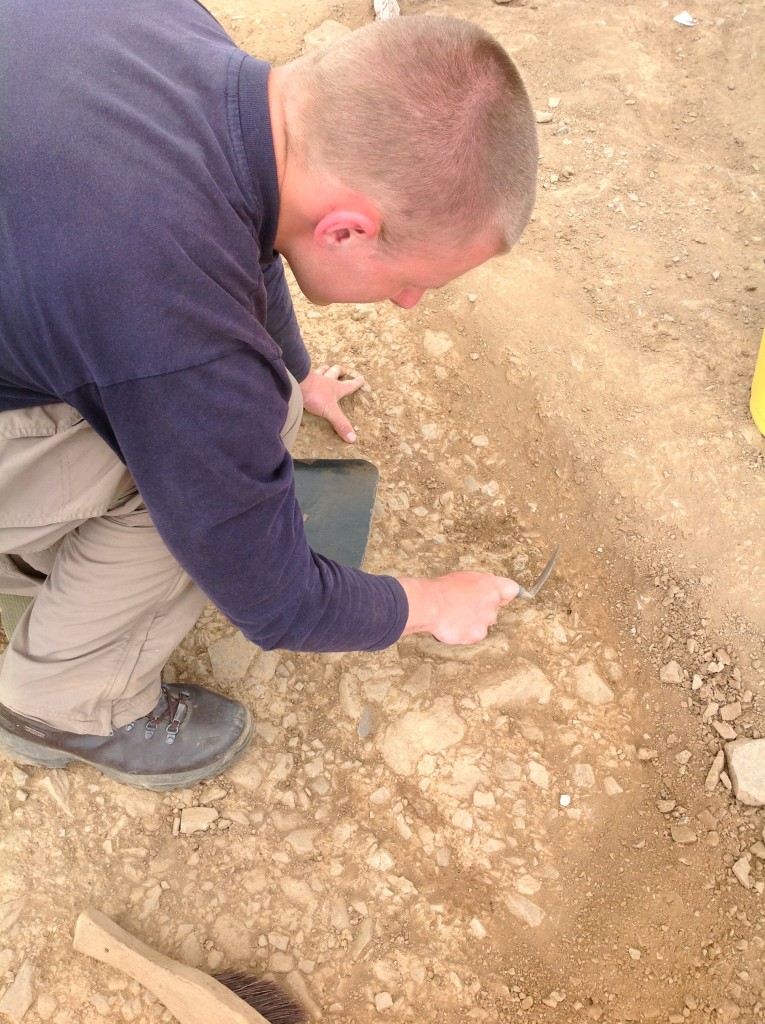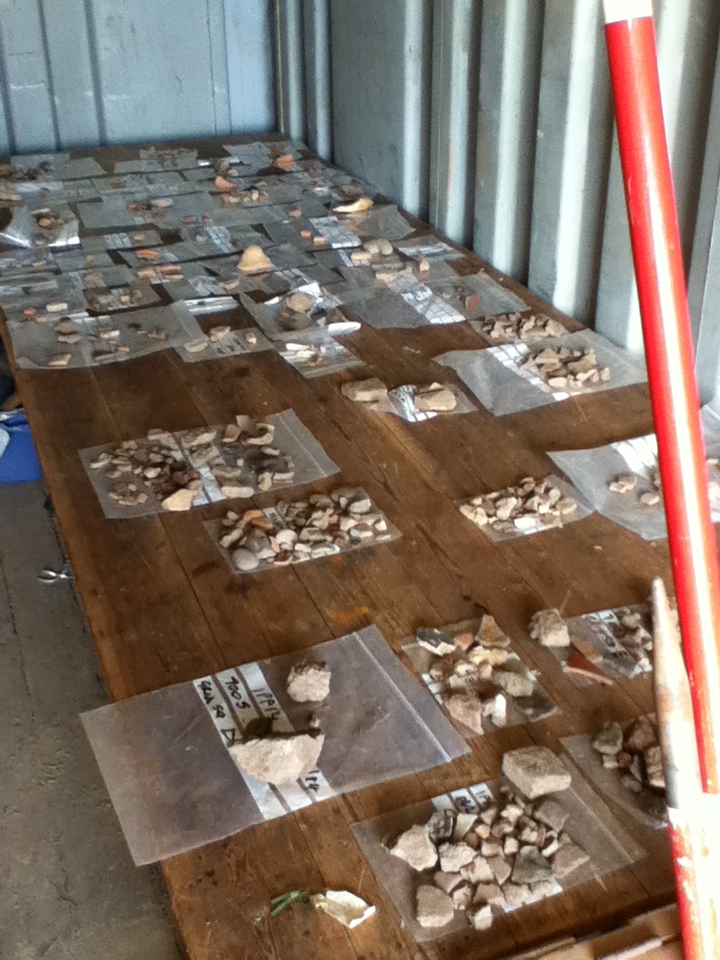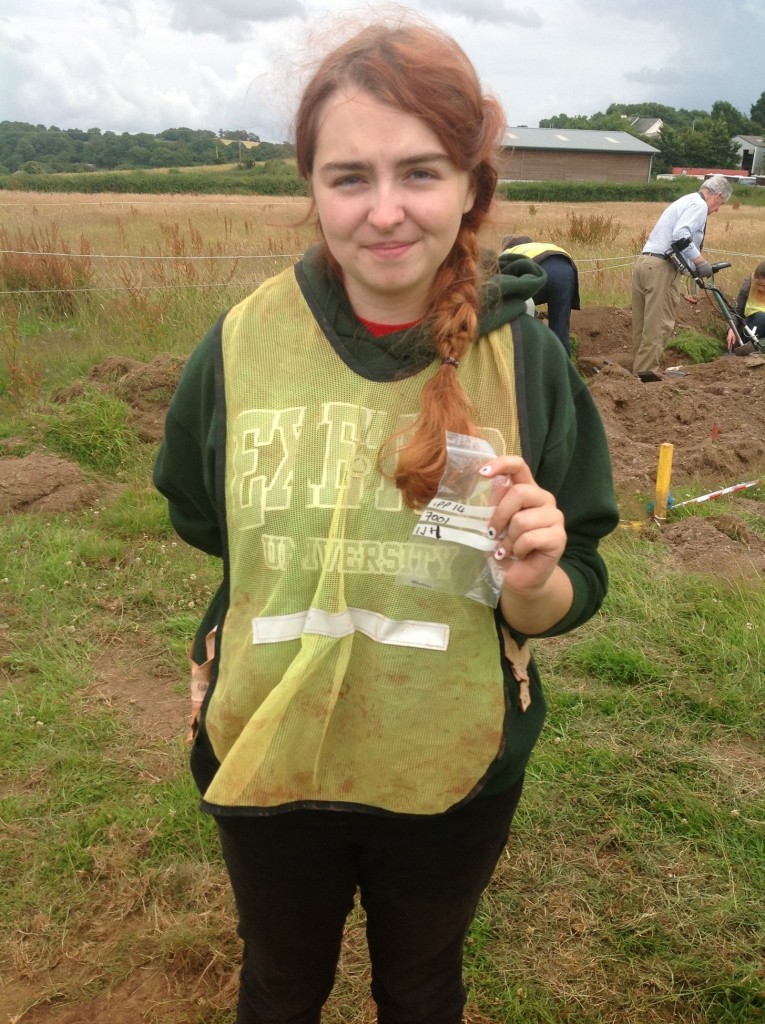




Today has been a super Sunday with many great finds coming up. In addition to the usual cornucopia of pottery, we found two beads, one green and one blue, found by 1st Yr. student Kayleigh, and by 2nd Yr. student Kate. The site is unprecedented in the South-West for the amount of pottery (particularly Roman) which is being found. As such it was fitting that today saw our 300th small find recorded, and you’ve guessed it, it was a piece of pottery!
As work continues on the road its character is really starting to come through; pot holes and wheel ruts are clearly visible (student Greg thinks he will find some double yellow lines soon). Now that we are finishing clearing back the plough soil, John presented a talk to everyone this morning about stratigraphy and matrices. The law of superposition was explained, which means that when excavating, if a layer (or fill) is above another, then that means it is assumed to be earlier. John also explained how the road would have been built, and multiple layers built up on it, with the roadside ditches slowly being filled with and cleaned of silt, but when the road went out of use the ditches filled up with silt, creating another layer. After many years a topsoil developed over this road, which in turn was ploughed in the 19th c., the land stopped being used for crops, and is now pasture. This means that there is a layer of ploughsoil where finds are found from the layer below, because they have been churned up by the plough.
Head over to our Facebook page to see Kate and Kayleigh with their beads.









